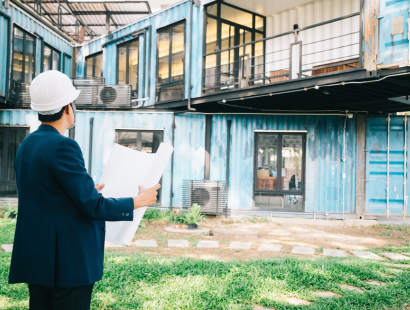Innovative Architectural Trends Shaping the Future of Urban Design

The architectural landscape is continuously evolving, driven by technological advancements, sustainability imperatives, and the changing needs of urban populations. These shifts are not just influencing how buildings are designed and constructed, but also how cities are planned and experienced. In this blog, we explore the innovative architectural trends that are shaping the future of urban design, highlighting the transformative potential these trends hold for our urban environments.
1. Smart Cities and IoT Integration
Smart cities represent the forefront of the future of urban design, integrating Internet of Things (IoT) technologies to enhance the efficiency and livability of urban areas. By embedding sensors and connectivity within the urban fabric, cities can optimize everything from traffic management to energy use and public safety. These technologies enable real-time data collection and analysis, allowing for more responsive and adaptive urban environments.
Smart buildings, equipped with IoT devices, can monitor and control energy consumption, lighting, and HVAC systems, leading to significant energy savings and a more comfortable living environment. As the future of urban design continues to unfold, the integration of smart technologies will play a crucial role in creating intelligent, responsive cities.
2. Sustainable and Green Building Practices
Sustainability is no longer optional; it’s a necessity for the future of urban design. Green building practices are becoming standard, with architects focusing on reducing the environmental impact of new constructions. This includes the use of sustainable materials, energy-efficient systems, and designs that reduce waste and promote recycling.
Green roofs, solar panels, rainwater harvesting systems, and passive solar design are just a few examples of how buildings are being designed to be more sustainable. These practices not only reduce the carbon footprint but also create healthier living environments. ARCHIVISTA Engineering has been at the forefront of incorporating sustainable practices into urban design, ensuring that future cities are both eco-friendly and resilient.
3. Adaptive Reuse and Retrofitting
As cities grow and evolve, the need to repurpose existing structures becomes increasingly important. Adaptive reuse and retrofitting are key trends in the future of urban design, transforming old buildings into functional spaces while preserving their historical and cultural value. This approach not only saves resources but also maintains the architectural heritage of urban areas.
By creatively reimagining old warehouses, factories, and office buildings, architects can create vibrant mixed-use spaces that blend the old with the new. This trend is particularly significant in densely populated urban areas where space is at a premium.

4. Mixed-Use Developments
Mixed-use developments are reshaping the future of urban design by combining residential, commercial, and recreational spaces within a single development. This trend promotes walkability, reduces the need for commuting, and creates more dynamic and vibrant urban communities. By integrating various functions within one area, mixed-use developments foster a sense of community and enhance the overall quality of urban life.
These developments are designed to cater to the diverse needs of urban dwellers, providing easy access to amenities and services. As cities continue to grow, mixed-use developments will play a critical role in creating sustainable, livable urban environments.
5. Biophilic Design
Biophilic design is an innovative approach that seeks to connect people with nature within urban environments. This trend is shaping the future of urban design by incorporating natural elements such as plants, water features, and natural light into architectural designs. The goal is to create spaces that promote well-being, reduce stress, and enhance productivity.
Biophilic design principles can be applied to both interiors and exteriors, creating harmonious environments that foster a connection with nature. As urban areas become more densely populated, the incorporation of biophilic design will be essential in creating healthier, more enjoyable living spaces.
6. Modular and Prefabricated Construction
Modular and prefabricated construction techniques are revolutionizing the future of urban design by offering faster, more efficient building methods. These techniques involve constructing building components off-site in controlled environments and then assembling them on-site. This approach reduces construction time, minimizes waste, and improves quality control.
Modular construction is particularly suited for urban environments where space and time are limited. It allows for the rapid development of housing, schools, and commercial buildings, helping to meet the growing demands of urban populations.
7. Resilient Urban Design
As cities face increasing challenges from climate change, resilient urban design is becoming a critical focus. This trend involves designing buildings and infrastructure that can withstand extreme weather events, rising sea levels, and other environmental threats. Resilient design strategies include flood-resistant buildings, green infrastructure, and flexible urban planning.
By prioritizing resilience, architects and urban planners can ensure that cities are prepared to cope with future challenges and protect their inhabitants. This proactive approach is essential for the long-term sustainability of urban environments.
Conclusion
The future of urban design is being shaped by innovative architectural trends that prioritize sustainability, technology, and adaptability. From smart cities and green building practices to adaptive reuse and biophilic design, these trends are redefining how we live and interact with our urban environments. ARCHIVISTA Engineering is at the forefront of these developments, committed to creating forward-thinking, resilient urban spaces. For more information and to explore how these trends can be integrated into your projects
As we look to the future of urban design, it’s clear that these trends will continue to drive the evolution of our cities, creating more sustainable, livable, and connected communities.



















































